Making pasta and having it after all that effort is fun until you need to clean the pasta maker! Honestly, I lost all my energy and zeal when it comes to rubbing a cloth against something persistently, and still, the aftermaths are nothing but zero.
Because the pasta makers that we have precisely states that “Do not wash it with water,” then what are we supposed to do?
For me, when I try to extract all the remaining dough and moisture from the equipment, it seems to come up with more!
Here, after my not so extended research, I have discovered the technique to clean this mess in a jiffy. So, let’s just get into the cleaning guide of a pasta maker!
Types Of Pasta Makers
Before we jump into the issue at hand, let’s take a look at the things we are actually talking about. So, a pasta maker has two types.
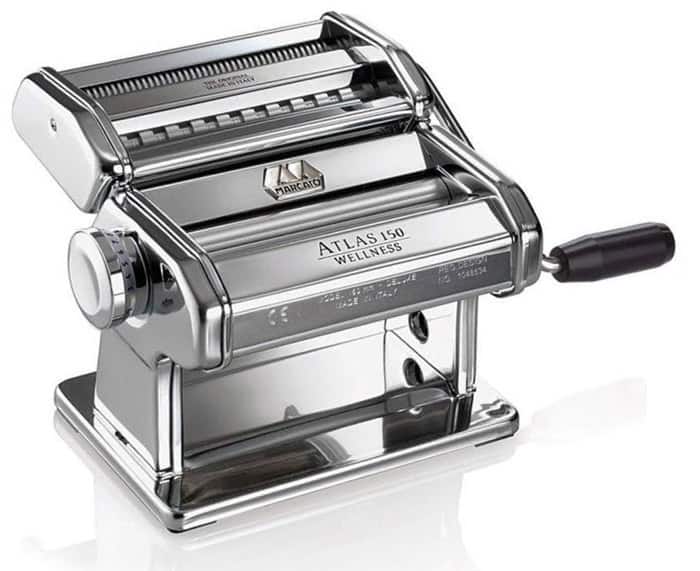
- Manual Pasta Maker
It’s the traditional equipment that’s comprised of a handle, a cutter, and an input where you have to embed the dough. When you windup the handle and insert the dough at the same time, the machine flattens the dough and release it as long and thin strands.
Then you have the cutter, which you need to chop off the larger sheets into small tender looking noodles or pasta. The dough strands will run through the cutter and result in your desired noodles length.
Here, the pasta maker seeks your genuine labor and time, yet the outcomes of conventional ones worth It.
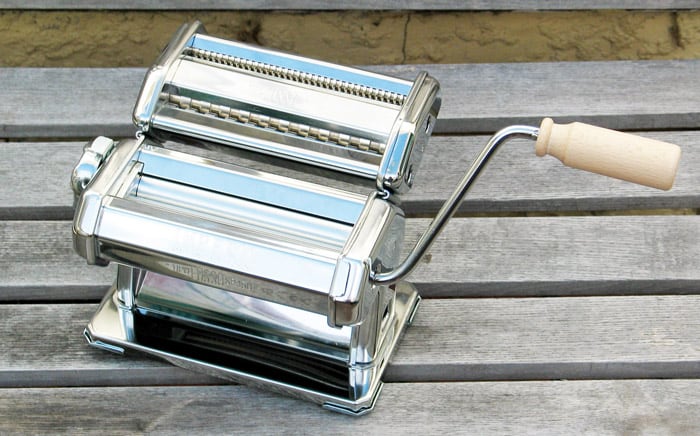
- Electric Pasta Maker
When you have an electric model, that device consists of a roller and an extruder as well, but the sole thing which makes it unique is its high caliber and power source.
Here you don’t need to keep toying with the roller; instead, you just need to feed the dough, and it will automatically release the thin and long sheets.
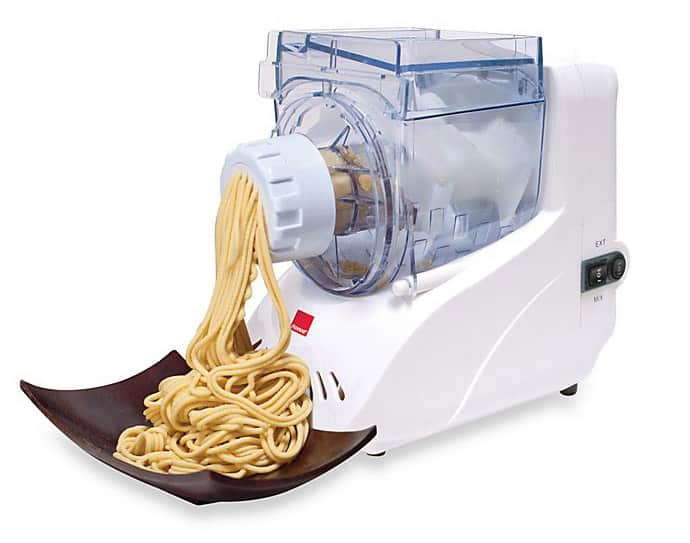
Easy And Effective Techniques On How To Clean A Pasta Maker
Well, as you have two types of a pasta maker, you need to wade through both of their cleaning processes.
Because just like your home requires constant cleaning as well as spring cleaning, your pasta maker needs it too.
And before allowing your tools to clean, make sure you have given a thorough read to the instruction manual and safety precautions.
Let’s start!
3 Quick Cleaning Tricks for the Manual Pasta Maker
To clean your manual pasta maker, first thing first, you need to narrow down what material has been used to craft the device. After that, follow these rules,
- Cleaning Your Stainless Steel Pasta Maker
If your machine is made of stainless steel, then it’s undoubtedly rust-resistant, sturdy, resilient, and immensely durable. However, it doesn’t give you the permission to drown it with water like your dirty clothes and rub with soaps and dishwashers.
Instead, it’s safe not to use too much water (if the manufacturer allows water cleaning).
You can take a cotton pad or a cotton rug cut into a small batch and gently move around the device to clean it. Also, you can use slightly damp cotton pads or towels rather than dripping water or any sort of oil.
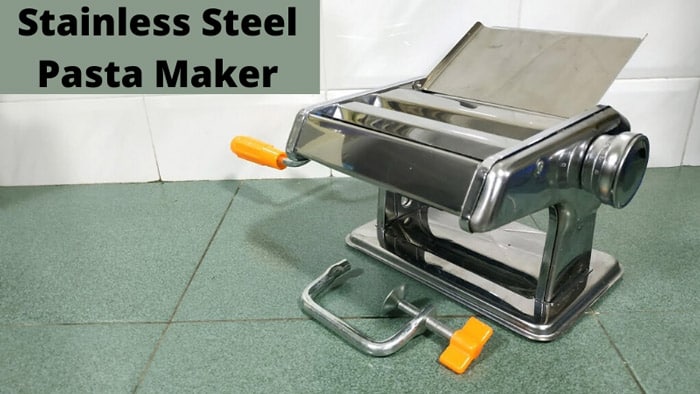
- Removing the Excess Pasta
Now, when it comes to cleaning the excess pasta or the sticky doughs, you need to feed a cotton towel cut in a thin line. When you insert the towel into the device where your dough sticks and move the roller, the towel leaves absorbing the debris with it.
- Cleaning Other Metals Like Copper
On the other hand, if your machine is made of other metals like copper, then you can rest easy knowing that it has exceptional resistance to corrosion.
So, follow the same process here, keeping the towel or cloth clean and wet. But after cleaning, make sure you wipe the entire tool with a dry rug.
Word Of Caution For Wooden Pasta Makers
Lastly, when you have a wooden machine, it’s advised not to use water. Because water and wood don’t go along. Thus, use a dry cloth or cotton rug here to clean the wooden one following the similar steps.
2 Steps for Cleaning the Electric Pasta Maker
Now with an electric pasta maker, you’ll have an in-depth manual where you will get a precise idea about the cleaning process. It’s pretty much the same unless it allows water and dishwasher cleaning.
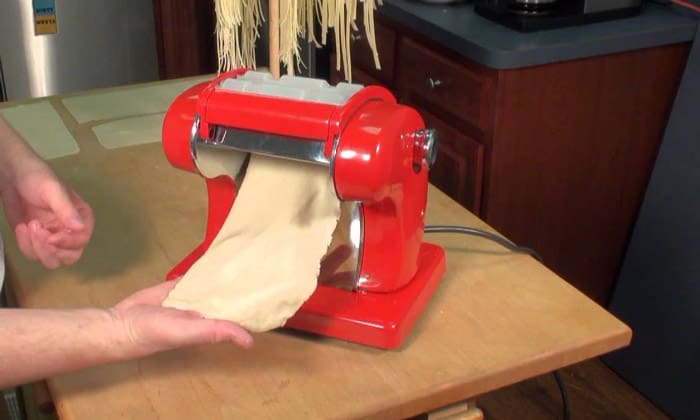
Let’s check it out!
- Dissect Each Part Where You Need Cleaning
First thing first, here’s the perk of having the best electric pasta maker, and it’s that most of the providers craft it for the user’s convenience, thus cleaning and the process of maintenance become handy. By speaking of that, I meant, you can disassemble the parts of your machine, and cleaning them one by one is more precise and distinct.
When the parts you need to clean are detached and separated from the large mount, you can be more accurate with the cleaning.
Moreover, you can use cotton buds for smaller areas and cotton cloths or towels for bigger parts.
- Deep Cleansing for the Gross Grimes
Use a few drops of dishwasher fluid with water for deep cleansing.
Simply by dipping the cotton cloth into it, wipe off the places where cleaning is necessary.
Hopefully, most of them are water-resistant, and dishwasher safe, yet don’t immerse your device into a bucket of water!
Word of Caution on Dissembling the Parts
On an important note, don’t dissect the parts which don’t need cleaning and repair.
And, always wipe off each part of the machine with a dry cloth; otherwise, accidents can occur due to lack of precautions.
Extra Tip: If you have a pasta pot and your pasta sticks to the surface, you can clean it by soaking the pot in water with few drops of baking soda (1/4), and then you can gently go with the scrubbing and conventional washing process. The stuck or burnt pasta will come out!
Bottom Line
Well, that was all about cleaning a pasta maker. I hope it was helpful; however, the method differs from one material to another and also the type and brand of the device you are using.
If you are having any doubts or afraid of cleaning it with water or the instruction manual seems vague, make sure you contact the manufacturer regarding this case.

